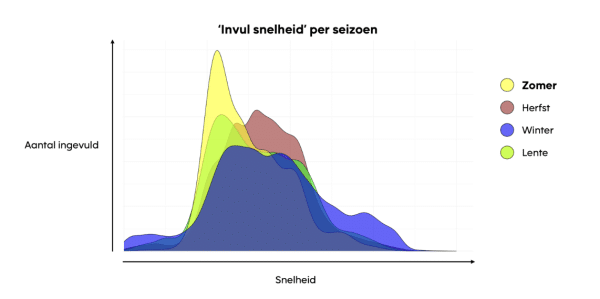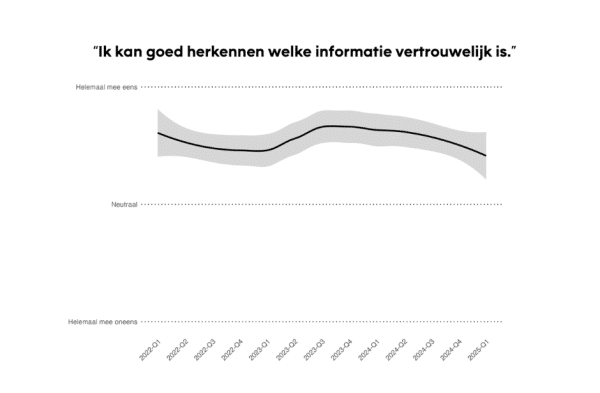CISO zomer
If you’re reading this blog, you’ve probably just come across our summer campaign: The CISO Goes on Vacation. In a series of short, lighthearted videos, you’ll see how things can go just a little wrong when CISOs get into vacation mode.
Funny? Absolutely. But there’s more to it. Control isn’t just a buzzword in this campaign – it’s our core message. According to behavioural science, context and the behaviour of others have a huge influence on how you act.
In this blog, we’ll dive deeper into how you can consciously leverage that sense of control.

Perceived control
Control isn’t just a buzz word in this campaign – it’s our core message. Because the level of control you feel directly influences your behaviour. And something interesting happens when you’re on vacation: people tend to take more risks and unknowingly loosen the reins.
Why? Because you step out of your familiar context:
-
frameworks disappear;
-
your environment changes;
-
the social norm shifts – you see others engaging in risky behavior.
Behavioural science tells us that context and the actions of others have a huge impact on how you behave. In this blog, we’ll explore how you can consciously apply that sense of control – not for your own vacation, but for the colleagues who are still on the job. So they can continue to work securely, even in a summer full of distractions.
Perceived control is the key to behavioural change
In many organisations, behaviour change is seen as the ultimate goal of awareness campaigns. But if you really want to make a lasting impact on behaviour, you need to go back to the basics: strengthening employees’ sense of control. Because without that feeling – the belief that you can successfully perform a certain behaviour – change remains superficial or short-lived.
A perfect example of how this sense of control works can be found in the world of sports. Elite athletes don’t just perform at the highest level because they’re physically capable – it’s also because they believe they can. That mindset is crucial for achieving goals, in any kind of behaviour.
What is perceived control?
Perceived Control, or “Perceived Behavioural Control,” is a core concept from the Theory of Planned Behaviour (Ajzen, 1991) Alongside attitude and social norms, perceived control shapes a person’s intention to engage in certain behaviour. What’s crucial here is that people feel they have enough knowledge, skills, and support to act successfully.
For example: someone knows that strong passwords are important, but if they don’t have practical tools to create or manage them, secure behaviour often doesn’t follow. In other words: knowing is not the same as being able — and that’s where the real challenge lies.
“Behaviour only changes when people have the confidence that they are capable of performing that behaviour. That requires practice, support, and acknowledgement.”
Why is that so important in information security?
In the context of information security, the lack of perceived control can lead to risk-averse or even avoidant behaviour. Think of employees who prefer to ignore phishing emails rather than report them, out of fear of doing it wrong. Or colleagues who share information insecurely because they don’t know what the alternative is. By providing training, support, and removing practical barriers, you not only give employees the knowledge they need but also the confidence they require. And that’s where behavioural change really begins.
How do you measure perceived control?
At Awareways, perceived control is measured as part of broader behavioural assessments and learning interventions. We use scientifically validated questionnaires based on the Theory of Planned Behaviour.
These questionnaires include questions such as:
-
“I know what I need to do in situation X”
-
“I feel capable of acting safely in scenario Y”
-
“I have the resources I need to work safely”
These questions measure the sense of control and autonomy – the core of perceived control.

What about perceived control in the summertime?
In our survey data, we see that employees are more likely to complete a questionnaire in the summer than in other seasons.
Are you super motivated, or already mentally on vacation? Either way, it’s a good reason to give them something extra during this period.

Does perceived control change over time?
Does perceived control change over time? Our survey data also shows that the sense of perceived control can change over time.
For example, with the statement “I can easily recognise which information is confidential,” we see that employees are becoming less confident in this regard. This is partly due to a decline in attention to working with different types of data according to GDPR guidelines.
How to strengthen perceived control
Now that it’s clear that perceived control plays a key role in exhibiting desired behaviour, we’ve outlined four interventions to strengthen this sense of control:
- Build knowledge step by step: start with short modules and repeat regularly through quizzes or updates in Teams. Use familiar situations.
- Offer choice in how and when to learn: provide content in various formats (video, podcast, e-learning) and allow employees to choose when they engage with it.
- Make safe behaviour easy: use checklists, shortcuts, and automated tools (like password managers) to make safe choices more accessible.
- Acknowledge safe behaviour publicly: reward phishing reports or completed modules with a compliment, badge, or shout-out on the intranet.
Would you like to know more?
If you’d like to dive deeper into the importance of perceived control and how to strengthen it within your organisation, contact our behavioral experts.




